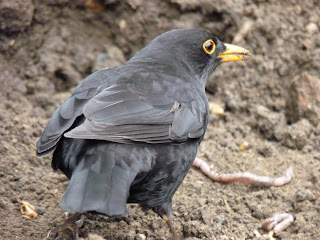I finally managed to get out to visit nearby Rookery Pit in Bedfordshire this afternoon. The Purple Heron had been making very brief appearances over the last few days and I knew it would be a long shot, but hey if you don't buy a ticket, you can't win the raffle.
I had never visited this site properly and it really is impressive, unfortunately being rapidly drained so the site can be developed.
It was a very warm, sunny afternoon and most of Beds birding elite were on site, so a very pleasant afternoon was to be enjoyed.
On arriving a Hobby was seen hawking over the pit and a drake Red-crested Pochard was in with some Mallards.
It was however Waders that were the birds of the day. At present we are in the middle of an amazing inland Bar-tailed Godwit migration and there were five of these present. Also 3 Greenshanks, 2 Ruff, 2 Turnstones, a Whimbrel, several Redshanks, a Green sandpiper, some Little ringed Plovers and Ringed Plovers. Why is there nowhere as good as this in Buckinghamshire !?
The Purple Heron unfortunately failed to make an appearance, but I did manage a new life-tick in the shape of a Dinghy Skipper Butterfly. I'll more than likely be back.
I had never visited this site properly and it really is impressive, unfortunately being rapidly drained so the site can be developed.
It was a very warm, sunny afternoon and most of Beds birding elite were on site, so a very pleasant afternoon was to be enjoyed.
On arriving a Hobby was seen hawking over the pit and a drake Red-crested Pochard was in with some Mallards.
It was however Waders that were the birds of the day. At present we are in the middle of an amazing inland Bar-tailed Godwit migration and there were five of these present. Also 3 Greenshanks, 2 Ruff, 2 Turnstones, a Whimbrel, several Redshanks, a Green sandpiper, some Little ringed Plovers and Ringed Plovers. Why is there nowhere as good as this in Buckinghamshire !?
The Purple Heron unfortunately failed to make an appearance, but I did manage a new life-tick in the shape of a Dinghy Skipper Butterfly. I'll more than likely be back.














